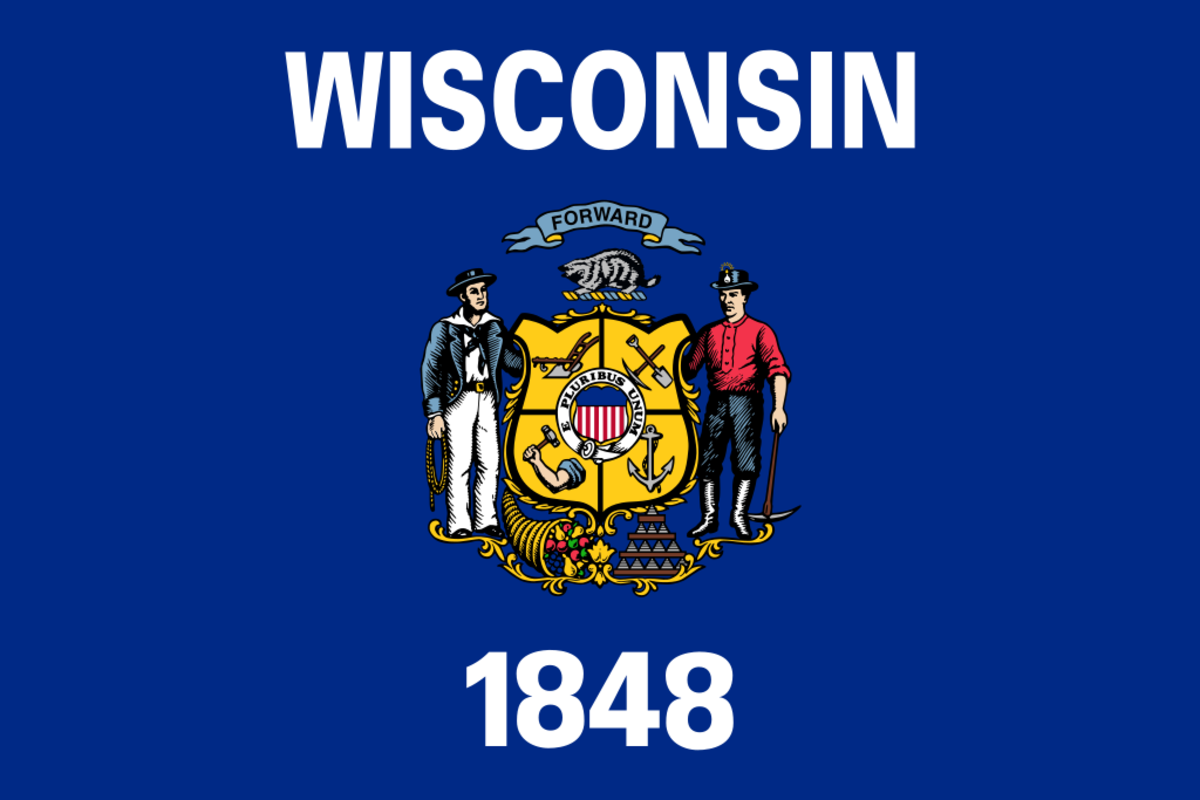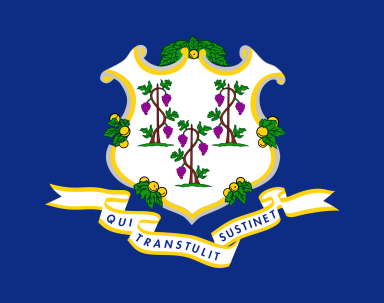A law firm in Ohio analyzed accident data from the NHTSA, concluding that Wisconsin ranks as the sixth most dangerous state for motorcyclists. In 2021, motorcycle accidents were among the leading causes of fatalities (120) and injuries (1,621) on the road in the Badger State. Speeding, drunk driving, and running red lights were some of the most common causes of crashes, while failure to wear helmets contributed to the severity of injuries and the reason for deaths. Figures from the NHTSA for 2020 showed that 83 of the 116 total deaths in 2020 were unhelmeted. Traffic accidents in recent years pointed to State Route 190, State Route 59, and Interstate 94 in Milwaukee, US Highway 51 in Madison, and Interstate 90 in Janesville as some of the most hazardous roads in Wisconsin.
To prevent and achieve zero injuries and fatalities on Wisconsin roads, the state government, through the Department of Transportation, has initiated the Zero in Wisconsin program. Lawmakers have also developed and implemented rules and regulations involving motor vehicles to ensure the safety of road users.
This article discusses the state’s motorcycle laws, insurance requirements, and personal injury liability guidelines for motorcyclists, crash victims, and plaintiffs.
Wisconsin Motorcycle Helmet Laws
Wisconsin requires individuals aged 18 and below to wear US DOT-approved helmets before operating or riding a motorcycle. All motorcycle operators with instruction permits are also obliged to wear properly fitted protective headgear. Additionally, they must wear eye protection, which can be either a protective face shield attached to the helmet, goggles, or glasses.
If the motorcycle’s windshield rises 15 inches or more above the handlebars, the operator may opt not to wear eye protection. Still, traffic authorities strongly urge motorists to wear protective gear before navigating the state’s roadways. Those who violate the law will be subject to a fine of $175.
Wisconsin Motorcycle Licensing Laws
Wisconsin residents planning to ride a motorcycle must obtain a Class M license before being allowed on the state’s highways. Before an individual can own a license, WisDOT requires them to either apply for an instruction permit and complete a DMV-facilitated road test, surrender a valid motorcycle license from another jurisdiction, or complete an approved RiderCourse.
A motorcycle instruction permit, which is valid for six months, can be acquired by passing a knowledge test, a vision screening, and a signs test. Applicants must complete the skills test within six months to be fully licensed. On the other hand, they can request an extension for another six months if they cannot accomplish the test within the given timeframe. Motorcyclists caught riding without the necessary license may incur demerit points and fines.
Wisconsin Lane Splitting Laws
Lane splitting (white lining), the act of riding a motorcycle between lanes of stopped or slow-moving traffic in one direction, is illegal in Wisconsin. Drivers are only allowed to operate their motorcycles within a single lane of traffic.
Lane splitting is considered highly dangerous to motorcycle riders and their passengers because it may result in an accident, leading to grave injuries and fatalities. Many car and truck drivers often fail to check their mirrors frequently to see if a motorcyclist is riding next to them. This means that at any moment, a car could move out of its lane and hit the rider or passenger.
However, state law allows two motorcycle riders to operate in a single traffic lane if they both consent.
Running the Red Light Laws in Wisconsin
State law strictly mandates all motorists, including motorcycle operators, to follow traffic signals. When a steady red traffic light is displayed, drivers must come to a complete stop. They must wait until the light turns green and no one is crossing traffic before proceeding. Riders must also yield the right-of-way to bicyclists, pedestrians, and other traffic lawfully using the intersection when making a turn on a red signal.
Meanwhile, according to Wisconsin Statutes 346.37, a motorcycle facing a red signal at an intersection may, after stopping for not less than 45 seconds, proceed cautiously through the intersection before the signal turns green if no other vehicles are present. The rule applies if the motorcycle operator reasonably believes the signal is vehicle-actuated.
Running a red light endangers the lives of other road users. According to the Insurance Institute for Highway Safety, 1,109 individuals died in 2021 across the country in crashes that involved running a red light. Meanwhile, data from WisDOT shows that in the same year, 2,976 road accidents resulted in deaths, injuries, and property damage in the state due to motorists’ disregard for red lights.
Wisconsin Basic Speeding Laws and Fixed Speed Limits
In 2021, the state recorded 363 speeding-related accidents involving motorcycles, 35 of which led to fatalities, and 296 resulted in injuries. Under the basic speeding law, Wisconsin requires motorcycle riders to always drive at a safe speed. They must go slower than the posted speed limit, especially in dangerous conditions such as wet and slippery roads. To avoid potential hazards, motorcyclists are also advised to reduce speed when riding at night, especially on roads they do not know well. The following table shows the fixed speed limits on the state’s various roadways.
There are also regulations for operating off-highway motorcycles. Drivers should reduce their speed to 10 mph or less when riding within 150 feet of a home or within 100 feet of someone not on a motorized vehicle, such as hikers and bicyclists.
Violators may receive speeding tickets, demerit points, and fines ranging from $30 to $600, depending on the level or number of offenses. Speeding in a school zone carries harsher penalties and can lead to double fines. In addition, those who operate their motorcycles carelessly, endangering the lives of others, may be charged with reckless driving.
Wisconsin Drinking and Driving Laws
Driving while impaired by alcohol and/or drugs is illegal in Wisconsin, as these substances impede a motorcycle rider’s ability to think clearly and ride safely. As cited in the Wisconsin Motorcyclists' Handbook, alcohol remains a major contributor to motorcycle crashes, with research indicating that 40% to 45% of all riders who died in accidents had been drinking. WisDOT crash statistics further support this fact, noting that 213 impaired motorcycle drivers were involved in 38 fatal and 163 injury accidents in 2021.
The legal blood or breath alcohol concentration in the state for motorcyclists aged 21 and over is 0.08%. For those under 21, driving with any traces of alcohol in their system is illegal. Moreover, drivers with three or more prior OWI convictions cannot operate a motor vehicle if they return a BAC greater than 0.02%. Anyone caught by law enforcement officers drunk driving may face severe penalties, including fines that range from $150 to $2,000, a maximum of six years imprisonment, and the suspension of their driver’s license.
Wisconsin also enacts the implied consent law, which posits that every license holder consents to chemical testing of their breath, blood, or urine if stopped on suspicion of impaired driving.
Wisconsin Motorcycle Insurance Requirements
Wisconsin motorists are mandated to have liability insurance. The minimum liability insurance requirements for motorcycle owners are:
$10,000 for property damage
$25,000 for the injury or death of one person
$50,000 for the injury or death of more than one person
Motorcyclists may opt to purchase additional coverage in their policy to protect them from bodily injury or property damage costs. Some of the optional coverages consumers may add are shown in the table below:
State law also requires motorists to show proof of insurance to law enforcement at any traffic stop. They can provide the officer with official documentation, like a digital version of their insurance card on their mobile device. Drivers who cannot present proof of financial responsibility during a stop or accident may face fines of up to $10. Meanwhile, individuals found operating a motor vehicle without insurance may be fined up to $500, and those showing fraudulent documents may face a maximum $5,000 penalty.
Wisconsin Is a Fault State for Insurance Claims
Wisconsin follows a fault-based structure, or tort system, when it comes to insurance claims for motorcycle accidents. Legislation states that an individual found to have caused a crash will be liable for the damages incurred, including medical expenses, lost earnings, and property repair costs.
How Much Can Someone Sue for a Motorcycle Accident in Wisconsin?
Motorcycle accident victims can seek compensation for the treatment of their sustained injuries by filing a personal injury claim. Each settlement takes into account compensatory damages (economic and non-economic) and, on some occasions, punitive damages.
Economic losses include past and future medical expenses, lost wages, property repair or replacement costs, and legal fees, while non-economic damages compensate for pain and suffering, mental anguish, loss of consortium, and loss of enjoyment of life. Punitive damages, on the other hand, can be ordered by a judge or jury if the at-fault driver was deliberate or reckless in his actions. These damages are designed to punish liable parties and deter them and others from committing the same offense. Additionally, families of people killed in motorcycle accidents may recover wrongful death damages, which cover funeral costs and lost financial support.
Every motorcycle crash is unique, which is why there is no definitive amount of settlement that every victim will receive. Each case will be determined by various factors, such as the severity of the injuries and the limits of applicable insurance policies. It is best to seek legal advice from an accident lawyer when filing a motorcycle injury claim to ensure a fair settlement.
Wisconsin Is a Modified Comparative Fault State for Motorcycle Accident Lawsuits
Wisconsin follows a modified comparative fault system when it comes to motorcycle accident lawsuits. Under this rule, individuals harmed in a motorcycle crash may recover compensation if they are found to be 50% or less responsible for the accident. However, the amount of damages will be reduced in accordance with their liability. If the plaintiff is 51% or more to blame for the crash, he cannot recover compensation.
For instance, if a judge or jury determines that the claimant’s total award is $100,000 but he is found to be 30% at fault for his injuries, then the amount will be reduced by 30%. This means the plaintiff will only receive $70,000.
Wisconsin Statute of Limitations for Motorcycle Accidents
Citizens of Wisconsin who sustained injuries or property damage in a motorcycle accident may file a lawsuit against the at-fault party per the state’s statute of limitations. They have three years from the date of the incident to file a suit. Meanwhile, family members of those who died after a motorcycle crash may file a wrongful death claim within two years of the victim’s death. To ensure they get the compensation they deserve, plaintiffs must act immediately. If they wait until the deadline has passed, they might be unable to obtain remuneration for their injuries and losses. Claimants should consult an experienced personal injury attorney to learn more about their legal options.
Legal Resources for Wisconsin Motorcycle Accident Victims
State Bar of Wisconsin Lawyer Referral and Information Service
The LRIS serves Wisconsinites, including motorcycle accident victims, in all counties across the state. It connects them with pre-screened lawyers with extensive experience and expertise in various practice areas. Lawyers associated with the LRIS help individuals seeking legal advice or assistance strategize the best course of action for their case. Wisconsin residents looking for legal professionals may contact (800) 362-9082.
Search Crash Reports
Motorcycle accident victims may request a copy of their crash report from the state's DOT. Reports are made available as soon as they have been received from the reporting law enforcement agency, which can take 10 to 15 business days. Applicants may look up their reports by entering the accident or crash number, the document number, or the date and Wisconsin driver's license number. Following purchase, the report will be immediately accessible for download as an electronic document in PDF.
Your report will not be emailed or mailed to you if you purchased it online. The Crash Reports program works best on a laptop or desktop computer. Although mobile devices such as smartphones and tablets can be used, they may lack the necessary software or PDF viewer to view the crash report.
Report a Traffic Crash
Citizens involved in motorcycle accidents should report the incident by completing the Wisconsin Driver Report of Crash DT4002. The crash should be reported to authorities if law enforcement fails to file the report and if the accident results in any of the following:
Injury to a person
Damage to any person's vehicle or property amounting to $1,000 or more
Damage of $200 or more to government-owned property
If a person involved in a crash receives a letter from WisDOT asking them to complete a report, they must comply. To accomplish this report, they will need their driver’s license number, vehicle identification number, and insurance information.
Wisconsin Office of the Commissioner of Insurance
The OCI safeguards insurance consumers while ensuring a competitive insurance environment. The department reviews policies sold across the state to ensure they meet the requirements. The office also provides motor vehicle owners with additional information about insurance requirements. Furthermore, consumers may visit the official website to file insurance complaints.
Wisconsin Motorcyclists’ Handbook
This guide includes details on how to get a motorcycle license and pass the knowledge test. People who intend to ride a motorcycle should also read the Wisconsin Motorists' Handbook for state-compliant driving tips and safe riding techniques.
Step into the world of Expertise.com, your go-to hub for credible insights. We don't take accuracy lightly around here. Our squad of expert reviewers, each a maestro in their field, has given the green light to every single article you'll find. From rigorous fact-checking to meticulous evaluations of service providers, we've got it all covered. So feel free to dive in and explore. The information you'll uncover has been stamped with the seal of approval by our top-notch experts.





